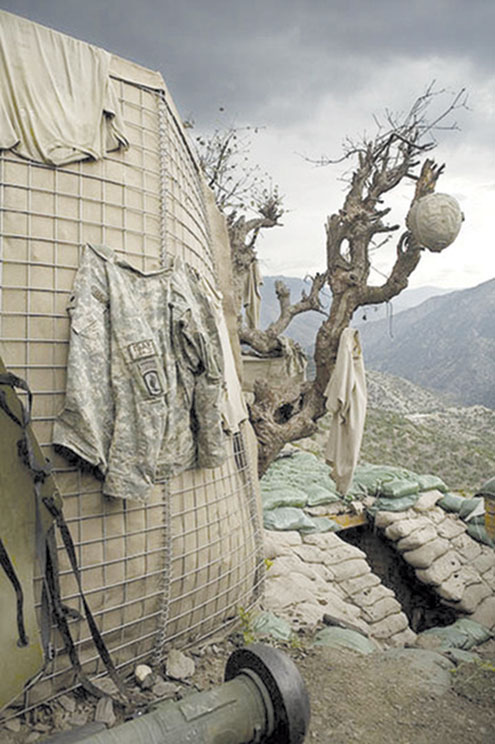 There are few times of the year when it makes perfect logical sense to write about a war movie. I can think of roughly five:
There are few times of the year when it makes perfect logical sense to write about a war movie. I can think of roughly five:
1. Memorial Day – what better time is there?
2. Veterans Day, which happens to be Friday, so I’m doing it in advance
3. If a new release happens to be a war movie or some similar event, maybe a war movie wins an Oscar or maybe a 25th anniversary release.
4. If, for some reason, our country entered into a new war.
5. If Alabama football plays for another national championship or something like it.
Wait a minute, something like it just happened this past Saturday. Makes perfect sense then, right? Right?
So, in honor of the upcoming Veteran’s Day and this past weekend’s battle, here’s a look at two war movies:
Restrepo
Perhaps one of the best war films of recent years is one few people have seen: the documentary “Restrepo.” It won the Grand Jury Prize at the 2010 Sundance Film Festival, and was nominated for best documentary at the 2011 Oscars. Co-director Tim Hetherington, sadly, was killed on April 20 this year while covering the conflict in Libya.
“Restrepo” follows an American platoon serving a year in Afghanistan’s deadliest region, the Korengal Valley. It captures the harsh truths of war, bravely portraying the men of the platoon as they are fired at, as they mourn the loss of a beloved comrade (whose last name becomes the name of their base and, subsequently, the name of this film), firing at the enemy while in combat and the sheer boredom faced in between combat.
One of the most poignant scenes, and there are many, is when Specialist Kyle Steiner explains how he loves the adrenaline rush of being in a combat situation and how it is like a drug. He questions how soldiers are expected to deal with this upon their return to civilian life. Even in a combat zone, soldiers face a difficult transition from having tedious, inconsequential assignments to firing automatic rifles while defending their lives.
“Restrepo,” like the greatest documentaries, doesn’t pass judgment on its subjects, and instead allows viewers to make their own judgments. It presents the human face of war, showing the individual experiences of young servicemen today, both the difficulties they face while at war and when they return home.
Open City
“Open City” is a movie from the Italian neorealist movement where amateur actors were used and movies were shot in real locations. The material feels authentic, especially when compared to Hollywood films of the same time period. Notable film critic James Agee was a big fan and once cited the movie for having a vitality rarely seen in film. Basically, the message of the movie boils down to the fact that a person’s soul amounts to a lot more than their material body, a potent message amid the atrocities that accompanied World War II.
While Saturday’s game doesn’t hold a candle to an event of such magnitude, I’m sure a lot of people in Tuscaloosa are crushed after Alabama’s loss to LSU. As “Open City” would remind us, one must always keep hope. It seems unlikely Alabama will make the national championship now, but there’s still a chance.
Besides, even if Alabama doesn’t make it, there’s a spot in a BCS Bowl: the Sugar Bowl. Most of all, I, for one, would love to hand it to those hated cross-state rivals who left an incredibly bitter taste in fans’ mouths with a one-point comeback victory last year on our home turf. We may not have enacted revenge on LSU, but there’s always Auburn.









